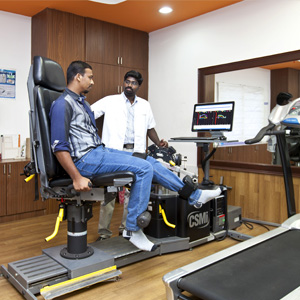Total knee replacement surgery is a significant step toward relieving pain and restoring mobility for those suffering from severe knee joint damage. Choosing the right implant is essential for long-term success and comfort after surgery. Understanding the types of implants available can empower patients to make informed decisions alongside their orthopedic surgeon.
- Components of a Total Knee Replacement Implant
- A total knee replacement implant typically consists of three main parts: the femoral component, the tibial component, and the patellar component. These components work together to mimic the natural movement of the knee and support weight-bearing activities.
The femoral component replaces the end of the thigh bone, usually made from metal alloys such as cobalt-chromium or titanium, offering strength and durability. The tibial component replaces the top surface of the shin bone and typically includes a metal base plate with a polyethylene (plastic) insert that acts as a cushion. The patellar component replaces the underside of the kneecap, often made from polyethylene to ensure smooth movement.
- Materials Used in Knee Implants
- Implants for total knee replacement surgery are crafted from advanced materials designed to withstand stress and reduce wear over time. Common metals used include cobalt-chromium alloys, titanium alloys, and stainless steel, all known for their biocompatibility and strength.
The polyethylene insert is a high-grade plastic that serves as the shock absorber between the metal components, reducing friction and wear. Newer technologies have introduced highly cross-linked polyethylene, which has enhanced durability, lowering the risk of implant loosening.
- Types of Total Knee Replacement Implants
- There are several types of implants tailored to patient needs, and understanding their differences can help set realistic expectations.
- Cruciate-Retaining (CR) Implants: These implants preserve the posterior cruciate ligament, maintaining some natural knee stability and movement.
- Posterior-Stabilized (PS) Implants: Used when the ligament is damaged or removed, these implants include a cam and post mechanism to provide knee stability.
- Medial Pivot Implants: Designed to mimic natural knee motion by allowing rotation around the medial side of the knee.
- Custom and Patient-Specific Implants: These are designed based on detailed imaging of the patient's knee, allowing for a more precise fit and potentially better outcomes.
- How Implant Choice Affects Recovery and Longevity
- The choice of implant can influence recovery time, knee function, and how long the implant lasts. For example, cruciate-retaining implants may provide more natural knee movement but require healthy ligaments. Posterior-stabilized implants can offer better stability when ligaments are compromised.
Modern implants are designed to last 15 to 20 years or more, depending on activity level and overall health. Advances in materials and design have improved implant longevity, making total knee replacement surgery a highly successful procedure for most patients.
- Factors Influencing Implant Selection
- Orthopedic surgeons consider several factors before recommending an implant for total knee replacement surgery.
Patient age, activity level, weight, bone quality, and ligament integrity are carefully evaluated. Surgeons also take into account any previous knee surgeries or deformities that could affect implant choice.
The goal is to select an implant that will offer the best combination of stability, durability, and comfort tailored to the patient's unique anatomy and lifestyle.
- The Role of Technology in Implant Design
- Technological advancements have transformed total knee replacement surgery in recent years. Computer-assisted surgery and robotic-assisted procedures allow for more precise implant placement and alignment.
Accurate positioning is crucial for implant performance and longevity, reducing wear and improving joint mechanics. These technologies help customize the surgery to individual patients, enhancing outcomes and satisfaction.
- Caring for Your Knee After Surgery
- Understanding the implant type is just one part of the journey. Postoperative care, physical therapy, and lifestyle adjustments are vital to maximizing the benefits of total knee replacement surgery.
Patients should follow their surgeon’s advice carefully, engage in prescribed exercises, and attend all follow-up appointments to monitor implant performance and knee function.
Conclusion
Selecting the right implant for total knee replacement surgery is a collaborative process between the patient and orthopedic specialist. With careful consideration of implant types, materials, and surgical techniques, patients can look forward to improved mobility and reduced pain.
For those seeking expert orthopedic care and advanced implant options, SoundaraPandia Bone and Joint Hospital in Chennai offers compassionate and skilled services tailored to each patient’s needs. Their commitment to excellence ensures you receive the best possible care on your journey to recovery.





Comments